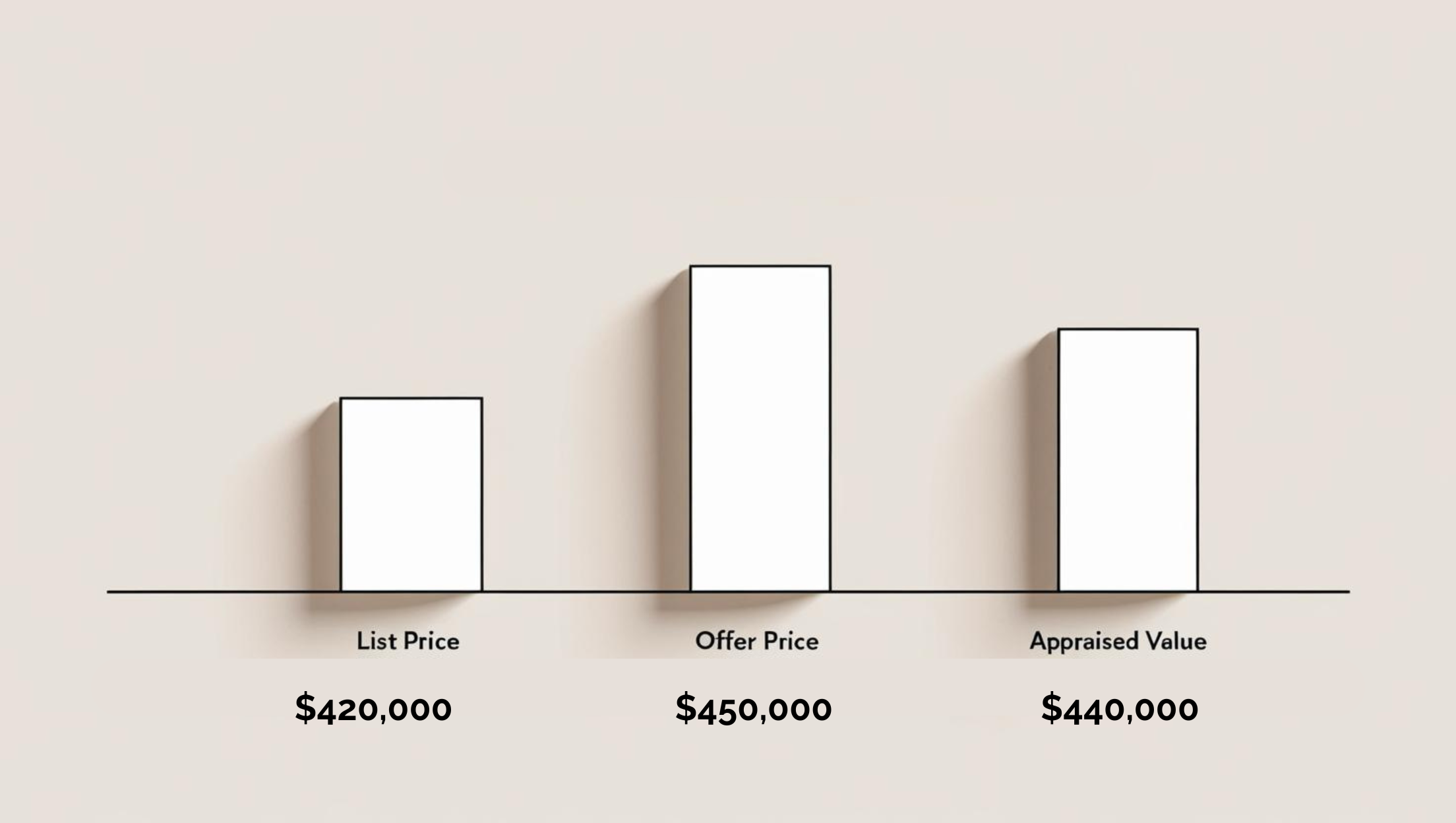In a competitive real estate market, offering above the list price is common, but this carries the risk of the home not appraising at the offer price. To navigate this scenario and secure the home, understanding how an appraisal gap works and incorporating it into your offer is a key strategy.
Your mortgage lender requires an appraisal to determine the property's value; they typically won't lend more than this value. The Appraisal Contingency in your offer usually means the purchase depends on the appraisal meeting or exceeding your offer price.
Offering Above List Price: What Happens with the Appraisal?
When your offer is significantly over list price:
- Appraisal at or above Offer Price: Your lender is satisfied, and your loan proceeds based on the purchase price.
- Appraisal below Offer Price: This is where an appraisal gap matters. If the appraisal is lower than your offer price, say you offered $450,000 and it appraises at $440,000 ($10,000 difference), the standard contingency allows you to object. Without an appraisal gap, you might be able to terminate the offer if you can't get financing at the offered price and the seller doesn't lower the price. Sellers often have a "Right to Cure," allowing them to adjust the price to the appraised value, but they aren't obligated to.
- Appraisal at Offer Price: The lender is satisfied, and the transaction proceeds normally.
Understanding the Appraisal Gap
An appraisal gap is when you, the buyer, agree in the offer to pay a specified amount over the appraised value if the appraisal comes in below your offer price. This amount is cash you bring to closing in addition to your down payment and closing costs. The total purchase price doesn't change, but the gap amount is paid out-of-pocket because the lender's loan is based on the lower appraised value. Some contracts may include a clause allowing the seller to adjust the price to the appraised value plus the buyer's agreed-upon gap amount if they have the Right to Cure.
Benefits and Risks of an Appraisal Gap
Benefits:
- Increased Competitiveness: An appraisal gap makes your offer much more attractive to sellers in a multiple-offer scenario.
- Seller Confidence: It assures the seller that you can close even if the appraisal is low.
- Winning Bidding Wars: It can be a deciding factor when competing with other buyers.
- Smoother Transaction: A low appraisal can prevent renegotiation or termination, provided the gap covers the difference or an adjusted price is agreed upon.
Risks:
- Requires Extra Cash: You must have accessible cash beyond your down payment and closing costs to cover the agreed-upon gap amount.
- Paying Above Market Value: You might pay more than the appraised value, potentially affecting your immediate equity.
- Financial Strain: Committing to a large gap could deplete savings needed for other expenses.
Cash Implications
Committing to an appraisal gap means you need liquid funds ready to transfer at closing if the appraisal is lower than your offer and within your specified gap coverage. This cash supplements the lender's financing, which is capped by the appraised value. Strategically allocating your available cash, perhaps by adjusting your down payment percentage, can make your offer "shinier" to a seller by highlighting your ability to cover a potential gap. Having this extra cash is a powerful lever to use.
Understanding the appraisal gap and having the cash to back it up can significantly strengthen your offer in a competitive market.


